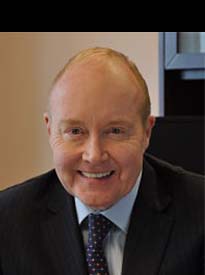
It was inevitable that, after a drawn-out debate on ideas to alleviate the regulatory burden and find efficiencies in securities regulation, proposals to restructure and consolidate the self-regulatory organization (SRO) system have now come forward.
It has long been recognized that consolidation of the existing framework could potentially unleash significant cost savings and efficiencies to benefit investors and market intermediaries. The integration of self-regulation can also remove regulatory barriers and enable flexibility for firms to package and deliver products and advice across dealer platforms, allowing them to better customize their offerings to investors.
One proposed consolidated model from the Investment Industry Regulatory Organization of Canada (IIROC) combines the two existing self-regulators — IIROC and the Mutual Fund Dealers Association of Canada (MFDA) — into a single SRO platform. The alternative proposal put forward by the MFDA is a more ambitious and complex integration, including not just the two members of the self-regulatory system, but nearly all other registration categories into a single self-regulatory platform. While the IIROC proposal is a more limited structure, it still offers dealers an open-ended architecture covering most financial products and services demanded by investors in domestic retail markets.
One of the main distinguishing features of the two proposed models is the role of market surveillance. The IIROC model retains surveillance in the debt and equity markets while the MFDA model jettisons the function for the consolidated entity. For many years, market surveillance responsibilities have been discharged by IIROC responsibly and effectively, as evidenced by IIROC’s performance during the recent and unprecedented market volatility. Importantly, the surveillance function has transformed IIROC into a more robust regulator, providing it with insights on investor behaviour and understanding of capital market trends.
IIROC’s proposal fuses two operating registrant categories on a single SRO platform, underpinned with a common operating infrastructure and under an over-arching board and management structure. This would facilitate a more harmonized rulebook of similar products and activities, and provide cost-effective mechanisms to shift advisors, products and even firms across separate IIROC and MFDA firm platforms. The integration of compliance and enforcement operations should result in significant operating cost savings and, importantly, builds a common culture across the regulatory entities to achieve consistency in compliance practices and enforcement obligations. The many single-platform IIROC and MFDA firms would still benefit considerably from the cost savings and synergies from integration, as well as the operational flexibility that the IIROC proposal envisages.
The biggest appeal of the IIROC model is that significant cost savings and regulatory efficiencies to investors and firms can be realized quickly and in the short-term, given a clear road map — continued separate regulatory structures and a common infrastructure, and minimal disruption in the status quo. Moreover, if the IIROC model is simply viewed as a first step toward a broader integrated SRO model, the logjam on structural change can be broken and significant cost savings and efficiencies can be reaped even more quickly. After that, further integration could proceed through a series of incremental decisions to include other registrant categories, starting with the more specialized market participants such as the distributors of non-prospectus securities (EMD registrants), and possibly PM/IC registrants, the discretionary asset managers.
The recently released CSA discussion paper on SRO reform contributes to the debate to improve self-regulation. While the paper describes the costs and inefficiencies of dual-platform SRO dealers, it also identifies other “targeted outcomes” for more efficient self-regulation, such as reduced regulatory arbitrage, more consistent investor access, accommodating technological innovation, minimal investor confusion and strengthened governance.
Initial progress to improve these key targeted outcomes could be achieved by building one of the two consolidated proposals and then extracting additional efficiencies over time within the consolidated SRO model. New registration categories may not even be needed, which would reduce investor confusion. The gradual process of rule harmonization within the consolidated structure could reduce regulatory arbitrage. Finally, better governance could be achieved through more transparent compliance and enforcement, good management of conflicts of interest and greater accountability of the regulators. These positive steps would bolster investor confidence and market participation.
The two self-regulatory organizations should come together to develop a strategic plan for SRO consolidation, building on the IIROC proposal, keeping in mind the need to deliver a more cost-effective SRO model for a more flexible and deeper product shelf, lower costs and consumer convenience. If that’s too optimistic, the two proposals that are currently on the table establish nearly sufficient common ground to set a direction and begin work. It would be a great disappointment if the deadlock is not broken and policy drift is not ended.
